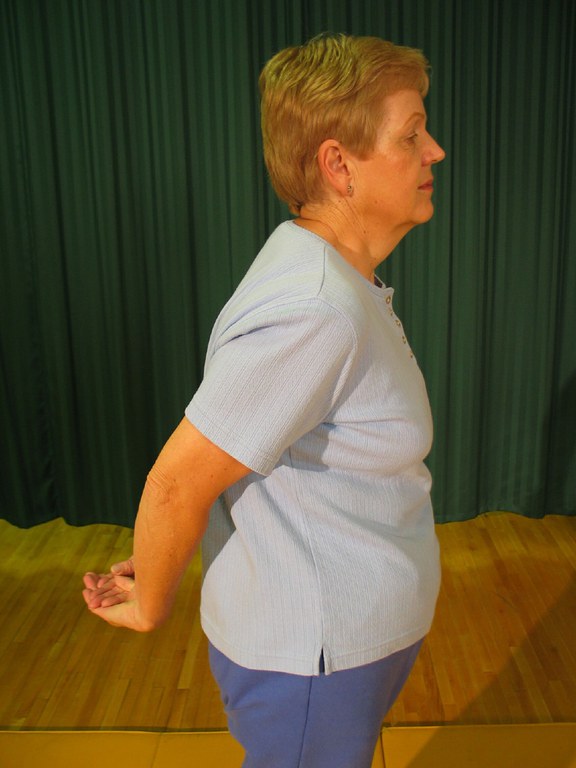Stretching Toward Better Health (FN607, Reviewed Nov. 2017)
Availability: Web only
Stretching may be done at any time of the day and can involve a great number of exercises. Probably your first stretch of the day is done just before or just after you get up. Your muscles have not moved much all night and need to be reminded of what they are designed to do. Watch a cat or dog when it wakes up. The first thing it does is stretch. Everyone needs a certain amount of flexibility or range of motion in the joints. Stretching exercises are the way to increase flexibility.
Types of Stretches
There are two types of stretching. Ballistic stretching is a repetitive, bouncing stretch that research has shown is not good for the muscles and tendons. Static stretching is a low, continuous stretch. This type of stretch is recommended for stretching exercises.
How to Stretch
To properly stretch a muscle, you should try to lengthen the muscle to a point where you just feel the muscle stretching. Stretching should not hurt; the statement “no pain, no gain” has no place in a stretching program. Hold the stretch for six to 10 seconds, lengthening the muscle if it relaxes in that period of time. Relax, then repeat the exercise.
These are static stretches suitable for people of all ages. Hold each position six seconds by counting 1001, 1002, etc. Then relax. Repeat each exercise the number of times indicated. These exercises will relax muscle tension and strain caused by sitting in one place or position for a long time.
Precautions
While you are stretching, you must remember to continue to breathe. Holding your breath during a stretch may increase your blood pressure above safe levels. If you continue to breathe as you stretch, your blood pressure should remain within normal limits.
Exercises that use rotation are not recommended for older people, particularly those with arthritis, because rotation exercises may damage the joints. These include such exercises as neck rotation, trunk rotation, arm circles and ankle rotation.
Note: Before beginning this or any exercise regime, be sure to check with your medical doctor for consent to begin.
1
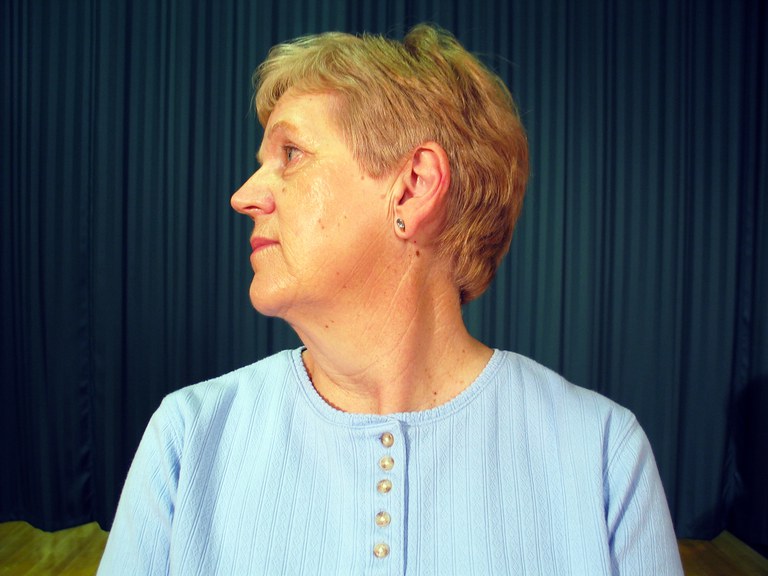
To stretch neck muscles: Sit straight. Turn head to left as far as it will go and hold six seconds. Turn head to right as far as it will go, and hold six seconds. Repeat sequence four times.
2
To stretch shoulders and pectoral (chest) muscles: Clasp hands behind back and straighten arms as much as possible. Move arms away from back, keeping chest and head up. Hold for six seconds. Return arms to start position and relax for six seconds. Repeat four times.
3
To stretch neck muscles: Sit or stand straight and lower left ear to left shoulder. Hold six seconds, then relax and repeat on right side. Repeat sequence four times.
4
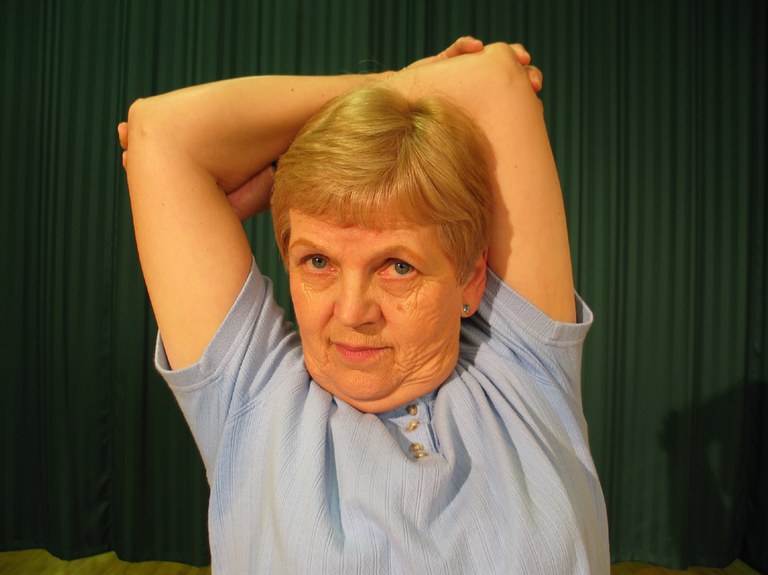
To stretch back of arm: Sit or stand straight. Grab one elbow with the opposite hand and gently pull your elbow behind your head. Hold for six seconds, then relax. Repeat twice.
5
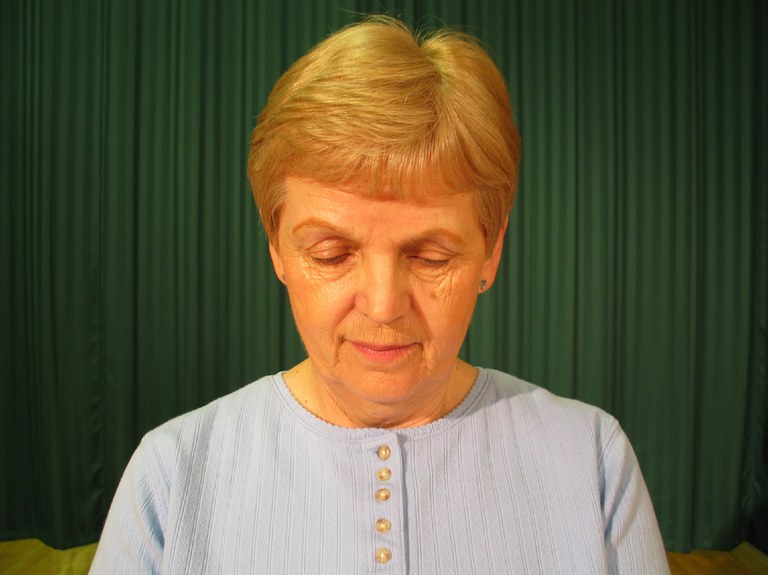
Front View
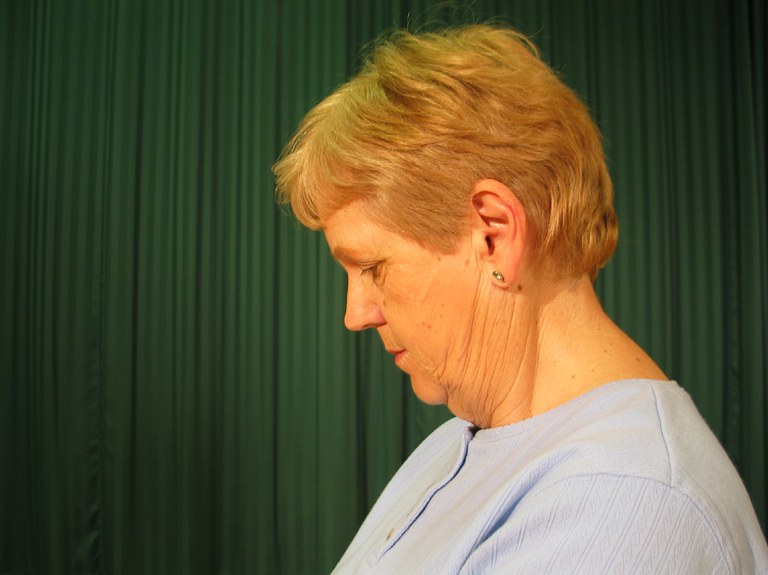
Side View
To stretch back of neck and shoulder muscles: Sit or stand straight. Tuck chin in and down to chest. Keep chin down and try to pull head back. Hold for six seconds, then relax. Repeat four times.
6
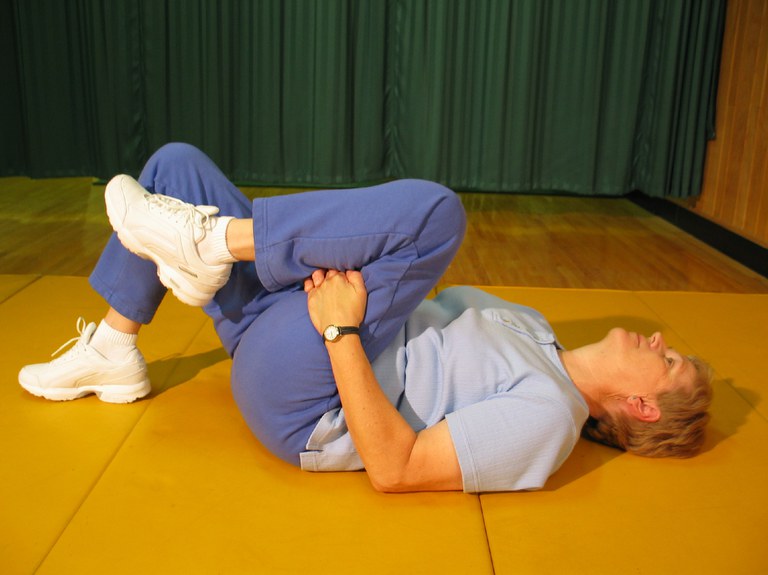
To stretch upper hamstring and buttock muscles: Lie flat on the floor, face up. Place foot flat on floor. Bring knee of other leg to chest. Grab leg just behind the knee with both hands and pull knee toward your chest. Don’t strain. Feel an easy stretch and hold for six seconds, then relax for five seconds. Switch legs. Repeat twice for each leg.
7
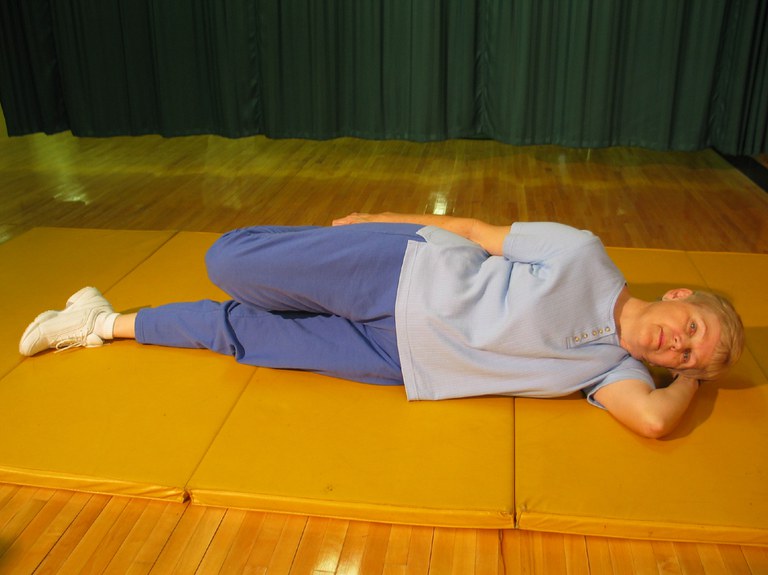
To stretch quadriceps (front thigh): Lie on your side and grab top foot. Pull foot toward thigh and buttock. Hold for six seconds, then relax for five seconds. Roll over to opposite side and do exercise with other leg. Repeat twice for each leg.
8
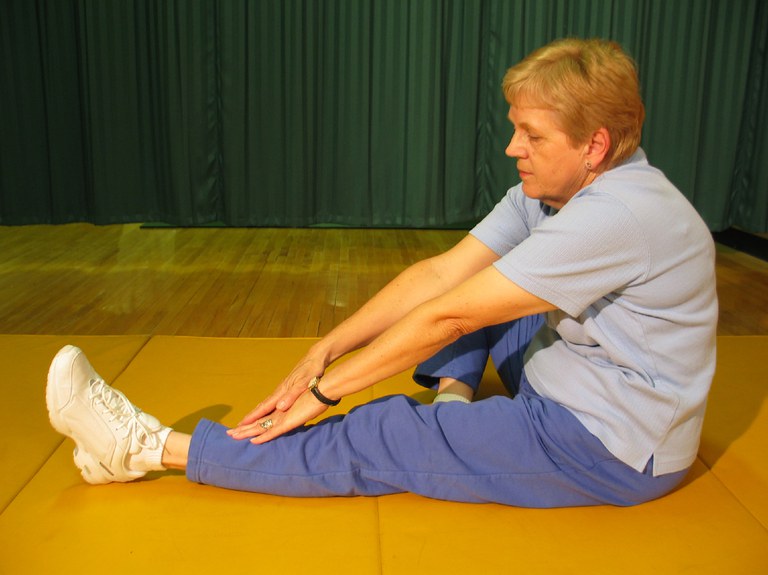
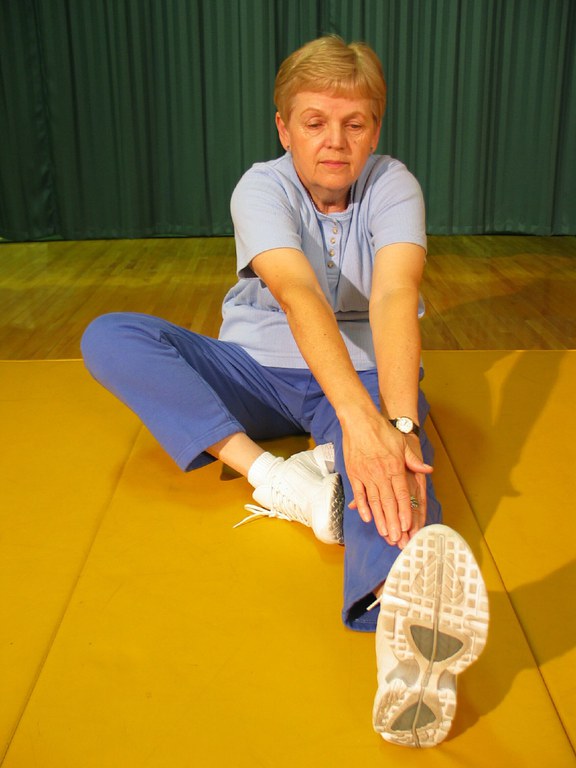
To stretch hamstring muscles (back thigh): Sit on floor. Straighten right leg and bring sole of left foot to rest next to inside upper part of straight leg. Lean slightly forward with arms and hands extended toward ankle of straight leg. Find an easy stretch, hold for six seconds, then relax for five seconds. Repeat three times for each leg. To help you stretch down, place a towel around foot of straight leg. Grasp ends of towel and pull.
9
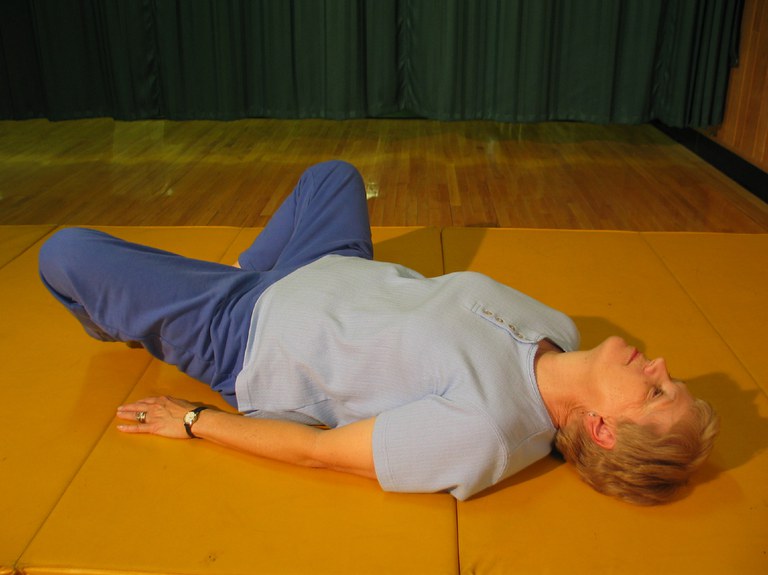
To stretch groin: Lie flat on the floor, face up. Relax with knees bent and the soles of your feet together. Push lower back toward floor. Hold for six seconds, then relax for five seconds. Repeat twice.
10
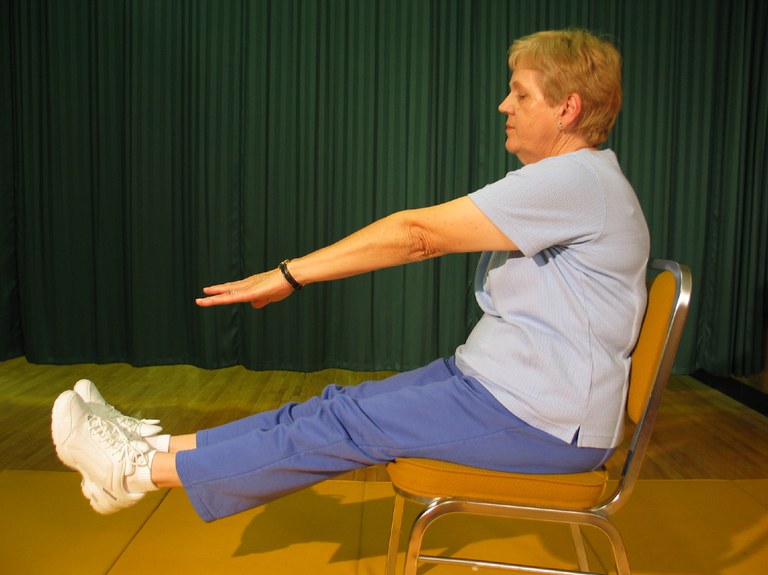
To stretch hamstrings: Straighten legs out in front, level with chair seat. Reach toward toes. Hold, relax, repeat. Watch your balance!
11
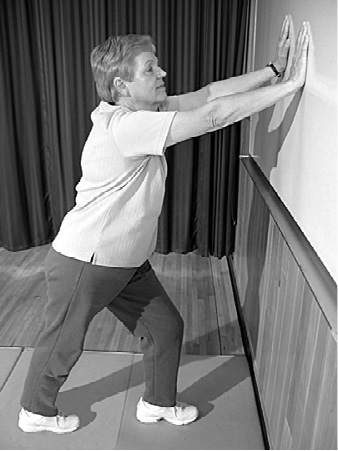
To stretch the gastrocnemius (calf): Stand two to three feet away from a solid support and, with arms and hands extended, lean against it. Bend one leg and place foot on floor in front of you, leaving other leg straight behind you. Slowly move your hips forward until you feel a stretch in calf of straight (back) leg. Be sure to keep heel of foot of straight leg on floor with toes pointed straight ahead. Hold for six seconds, then relax for five seconds. Switch legs. Repeat twice for each leg.
12
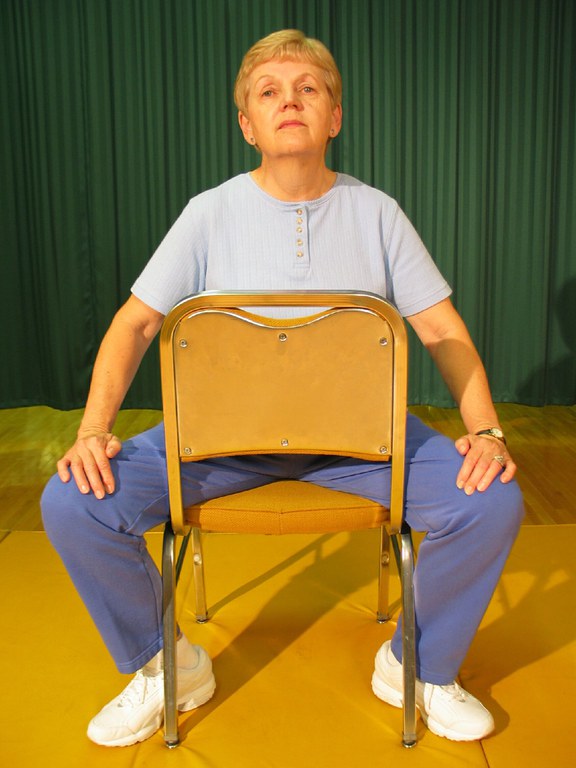
To stretch groin: Sit backward on the chair, straddling the back to stretch legs. Using hands, gently spread legs further apart. Hold, relax, repeat. (Or sit normally in chair and spread legs to exercise.)
13
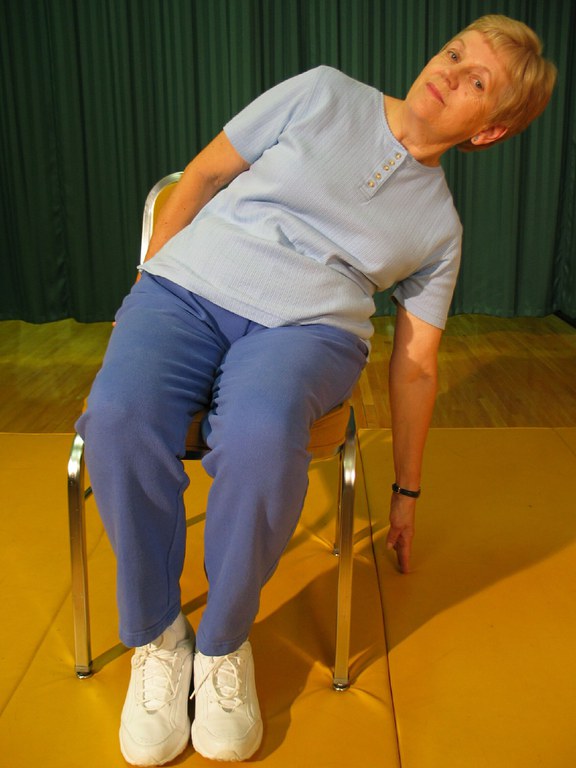
To stretch trunk: While sitting, bend right side over and touch floor with right hand. Hold.
14
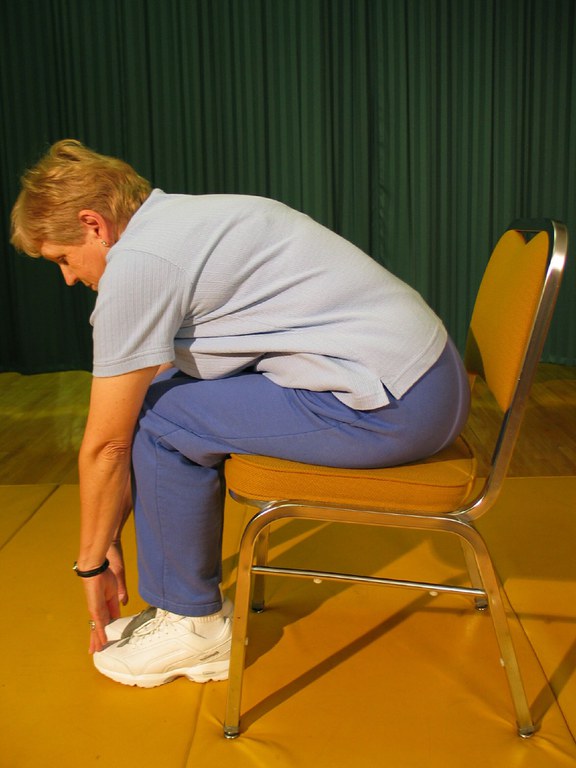
Side View
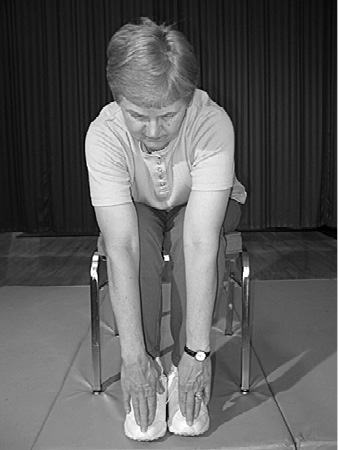
Front View
To stretch lower back and hamstrings: Sit straight in chair. With knees together, bend forward and stretch toward the floor (or toes). Hold. Return to original position. Avoid this and other bending-over exercises if they make you dizzy.
15
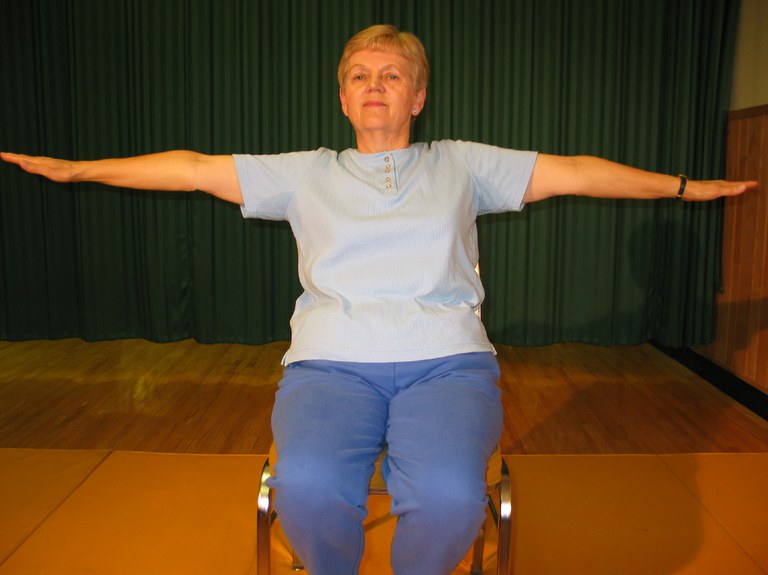
To stretch trunk: With arms out to the side, level with shoulders, shift shoulders sideways to right. Hold. Stretch to left. Hold. Don’t bounce!
16

To stretch shoulders: Sitting straight, wrap arms around chair back. Pull backward away from chair back. Relax and repeat.
Fitness - Related Links
American Heart Association
Visit the American Heart Association site for more information on diseases and conditions, nutrition, fitness, and much more.
American Council on Exercise
This web site will provide you with daily health and fitness tips, as well as publications on current fitness issues.
Women’s Health
Take a look at this site for reliable, health-related information on a variety of topics, such as breastfeeding, fitness and nutrition and pregnancy.
National Center for Chronic Disease Prevention and Health Promotion
Click here for more information on strength training to increase muscle strength, maintain bone health, reduce disease symptoms, and improve balance, coordination and mobility.
Dietary Guidelines for Americans
Check out this site if you’re interested in learning more about healthy body weight, risk factors for chronic disease, physical activities for adults, and much more!
National Center for Chronic Disease Prevention and Health Promotion
Check out this page of the CDC’s Nutrition and Physical Activity web site to learn how to safely perform specific exercises.
National Institute on Aging
This site contains tips on how to exercise, how to do it safely, and how to mark progress.
Printing of this publication was made possible in part with funds from the Centers for Disease Control and Prevention (CDC) Prevention Health and Health Services Block Grant #2004-B1-ND-PRVS, awarded to the North Dakota Department of Health.
Reviewed November 2017

